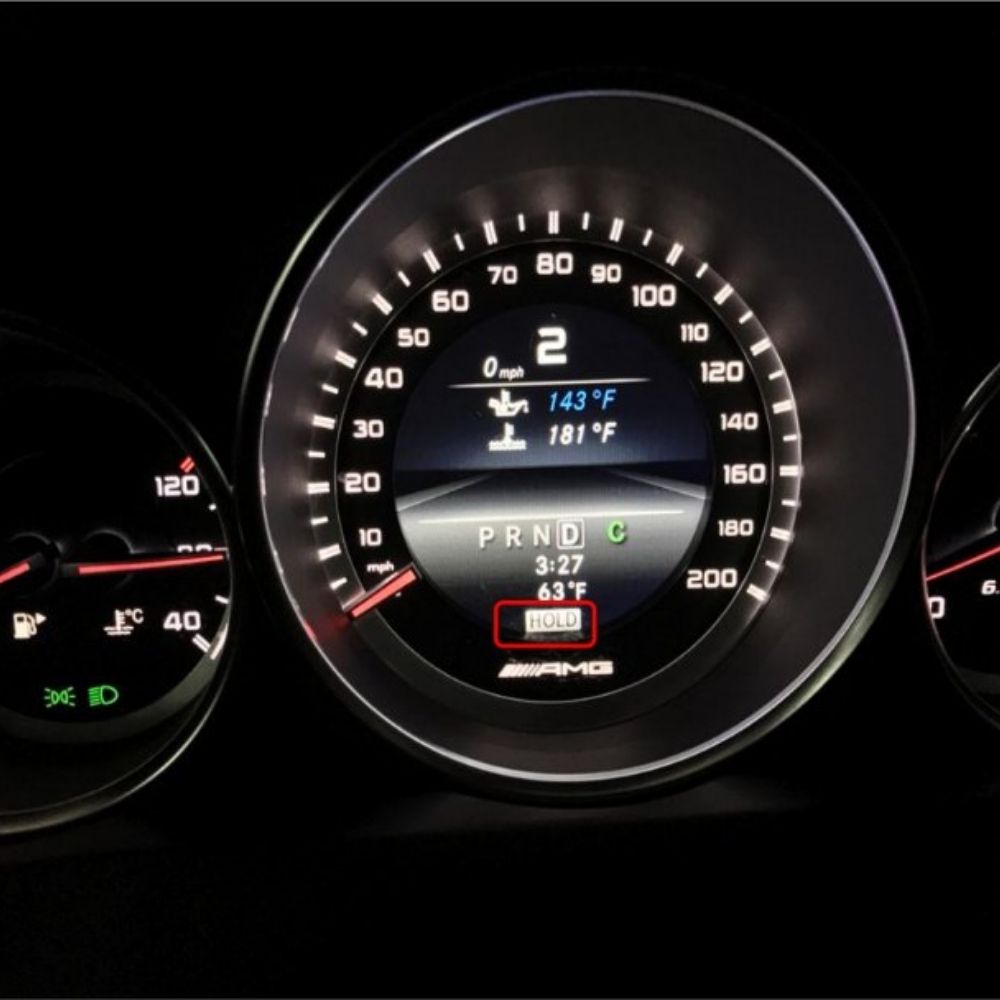
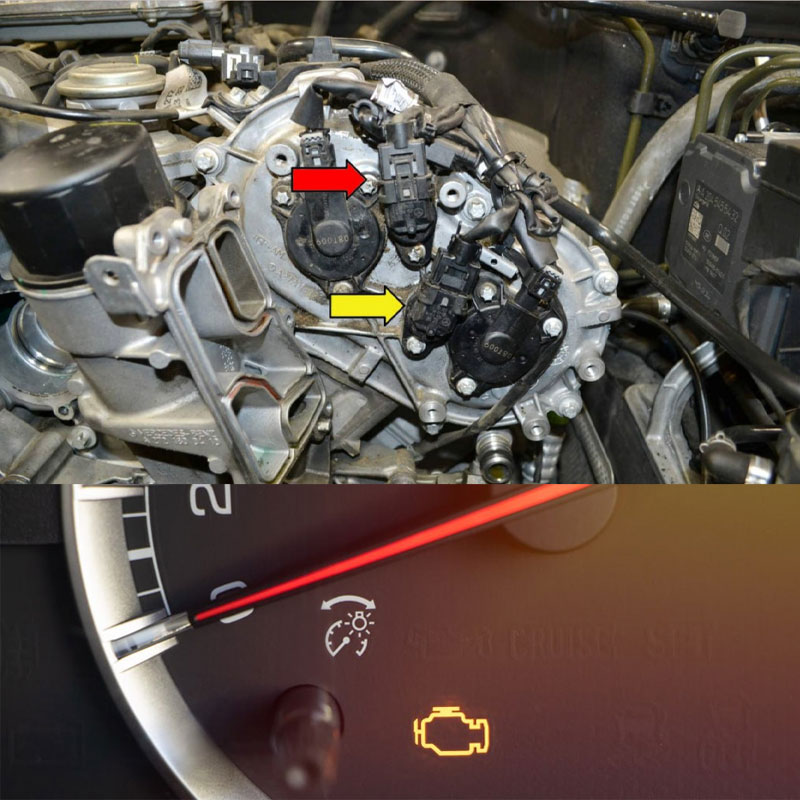
The DTC Mercedes P0024 code signals a critical issue with the exhaust camshaft timing on Bank 2, where the camshaft’s position exceeds the Engine Control Module’s (ECM) commanded parameters. This code is often linked to variable valve timing (VVT) system malfunctions, oil quality issues, or mechanical failures in timing components. Affecting models like the C-Class, E-Class, and G-Class, resolving P0024 requires a systematic approach combining electrical diagnostics, mechanical inspections, and adherence to Mercedes-specific protocols.
The P0024 code—“Exhaust ‘B’ Camshaft Position Timing Over-Advanced (Bank 2)”—indicates the ECM has detected a misalignment between the actual and desired positions of the exhaust camshaft on Bank 2. This bank refers to the engine side opposite Cylinder 1. Mercedes’ VVT system relies on oil pressure to adjust camshaft timing dynamically, optimizing valve operation for performance and efficiency. When the camshaft timing becomes excessively advanced, it disrupts the engine’s synchronization, leading to operational inefficiencies and potential damage.
Table of Contents
ToggleWhen the Mercedes P0024 error code appears, it often brings along several noticeable symptoms that can indicate an underlying problem with your vehicle’s engine timing system. Recognizing these signs early can help in prompt diagnosis and prevent more extensive damage. Here are the common symptoms associated with this code:
Illuminated Check Engine Light: This is often the first and most obvious indicator. The check engine light will illuminate on your dashboard to alert you that the ECM has detected a problem and stored a corresponding diagnostic trouble code, in this case, P0024. Persistent warnings might also appear on your vehicle’s information display.
Rough Idling or Stalling: An over-advanced exhaust camshaft timing on Bank 2 can lead to imbalances in the engine’s combustion process, resulting in a rough or unstable idle. In some cases, especially during cold starts when the engine is still adjusting, the engine might even stall.
Reduced Engine Power and Hesitation: Incorrect camshaft timing can significantly impact the engine’s ability to generate power efficiently. You might experience a noticeable decrease in acceleration performance, and the engine might hesitate or feel sluggish when you try to speed up.
Knocking Noises from the Engine Bay: Improper valve timing can cause the pistons and valves to come into contact at incorrect times, leading to distinct knocking or ticking noises emanating from the engine compartment. This is a serious symptom that requires immediate attention.
Failed Emissions Tests: The over-advanced exhaust camshaft timing can result in incomplete or inefficient combustion, leading to an increase in harmful emissions. This can cause your Mercedes-Benz to fail emissions tests.
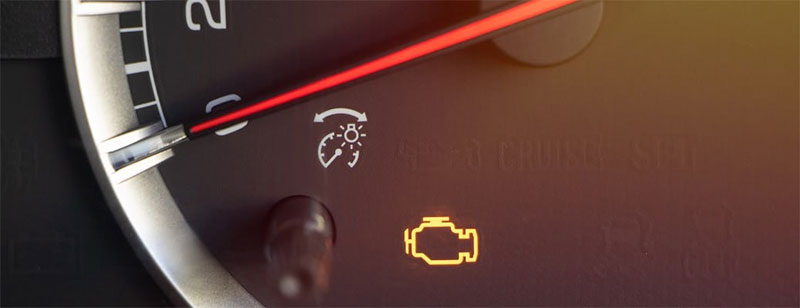
Several factors can contribute to the triggering of the Mercedes P0024 code. Identifying the root cause is essential for effective repair. Here are the most common culprits behind this exhaust camshaft timing issue:
Low or Degraded Engine Oil: The VVT system in your Mercedes-Benz relies heavily on clean engine oil at the correct viscosity and level to function optimally. Sludgy, contaminated, or low oil can fail to provide the necessary hydraulic pressure to the camshaft phaser, hindering its ability to adjust timing correctly. Mercedes-Benz specifies particular synthetic oils, often meeting MB 229.5 or MB 229.52 standards, to ensure proper VVT system operation and engine longevity. Using the wrong type or allowing the oil to degrade beyond its service life are significant contributing factors to VVT system problems.
Faulty VVT Solenoid or Phaser: The VVT solenoid controls the flow of oil to the camshaft phaser. If this solenoid becomes clogged, electrically compromised, or fails internally, it can restrict or completely block oil flow, preventing the phaser from adjusting the camshaft timing as commanded by the ECM. Similarly, the camshaft phaser itself can become stuck in an over-advanced position due to internal damage or debris. Testing the VVT solenoid’s resistance (typically between 6.9 and 7.9 ohms at 68°F) and verifying its mechanical actuation are crucial diagnostic steps.
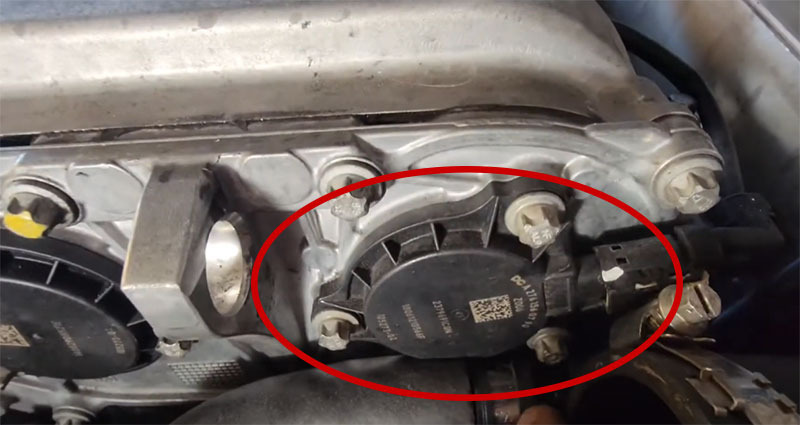
Timing Chain/Belt Issues: The timing chain (or belt, though less common in modern Mercedes-Benz engines) is responsible for maintaining the precise synchronization between the crankshaft and camshafts. Over time, timing chains can stretch, and their associated tensioners and guides can wear out. This wear can lead to timing misalignment, causing the camshaft to be out of sync with the crankshaft and potentially triggering the P0024 code. Mercedes-Benz’s M276 and M278 engines, for instance, are known to sometimes experience timing chain wear after a certain mileage, often exceeding 80,000 miles.
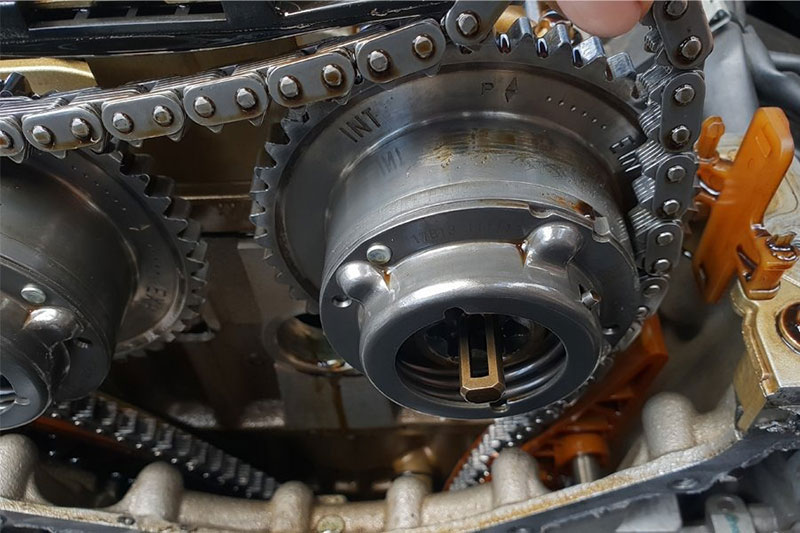
Electrical and LIN Bus Faults: The VVT system relies on proper communication between the ECM, camshaft position sensors, and the VVT solenoid. Corroded electrical connectors, damaged wiring, or faults within the Local Interconnect Network (LIN) bus can disrupt the signals necessary for accurate camshaft timing control. The LIN bus, often utilizing a purple/white wire, facilitates communication between various electronic control units. Signal drops or interruptions on this bus can lead to the ECM receiving incorrect information about the camshaft position, potentially resulting in a P0024 code. An oscilloscope can be invaluable for analyzing LIN bus signal integrity.
Software Glitches: In some instances, an outdated or corrupted version of the ECM’s software (firmware) can misinterpret sensor data or improperly control the VVT system, leading to the erroneous triggering of a P0024 code. Reprogramming the ECM with the latest software using Mercedes-Benz’s diagnostic tools like Xentry or other compatible OEM-level tools can sometimes resolve these software-related issues.
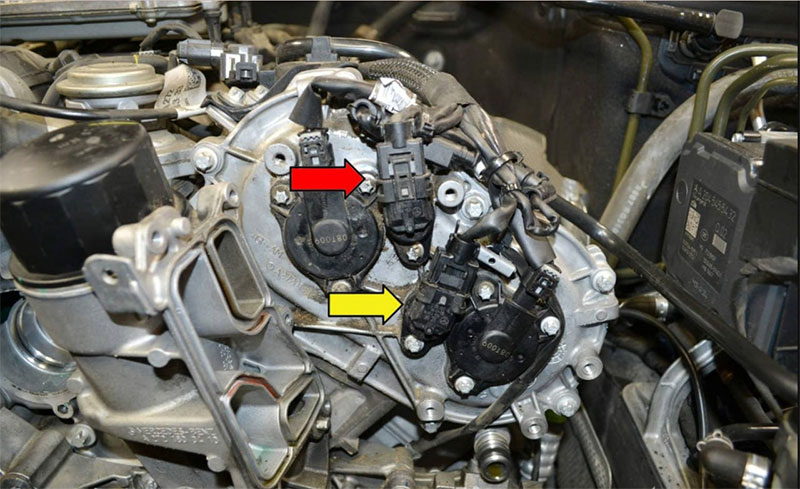
You need a scanner that can read live data, freeze frames, and manufacturer-specific DTCs for Mercedes-Benz systems.
Mercedes-Benz Star Diagnostic Tool (Xentry/DAS) – Best for in-depth diagnostics, actuator tests, and adaptations.
=> Get Xentry Software Download Link here!
To verify VVT (Variable Valve Timing) operation, you’ll want to observe:
Camshaft timing angle
Camshaft sensor vs crankshaft correlation
Oil pressure
VVT solenoid response
These can be monitored in the scanner’s live data stream.
You’ll need common hand tools for removing engine components to access cam sensors or actuators:
Ratchet and socket set (8mm, 10mm, 13mm typically)
Torx drivers (T25, T30, T40 often needed on Mercedes engines)
Screwdrivers (Phillips and flathead)
Allen/hex keys
If your diagnosis leads to stretched timing chains or incorrect cam timing, you’ll need:
Camshaft locking tool kit
Timing chain tensioner tool
Crankshaft locking pin
Make sure you use the correct kit for your Mercedes engine family (e.g., M272, M273, M274, M276, etc.).
For testing electrical components like the camshaft position sensor or VVT solenoid, use:
Digital Multimeter – for resistance, voltage, and continuity testing
Automotive Oscilloscope – to check cam/crank waveforms and timing correlation
Since the VVT system is oil-driven, low or inconsistent oil pressure may trigger P0024.
Use an oil pressure gauge to verify pressure at idle and under load.
Check against factory specifications (usually ~20-60 psi depending on engine speed).
Based on what you find, you might need:
Camshaft position sensor (Bank 2, Sensor B – Exhaust)
VVT solenoid / oil control valve
Timing chain kit (if stretched or out of spec)
Fresh engine oil + filter (must be MB-Approved, correct viscosity)
These official Mercedes resources give you:
Precise wiring diagrams
Torque specs
Component locations
Repair procedures
=> You can contact AutoExplain +1(936)2896695 via WhatsApp for free Mercedes wiring diagram
Diagnosing the Mercedes P0024 error code requires a systematic approach that combines preliminary checks, component-specific testing, and careful inspection of the timing system. Here’s a detailed step-by-step procedure that professional technicians often follow:
Step 1: Preliminary Checks
Verify Oil Level and Quality: Begin by checking the engine oil level using the dipstick. Ensure it is within the recommended range. Also, inspect the oil’s condition. If it appears dark, sludgy, or diluted, it indicates the need for an oil and filter change. Adhering to Mercedes-Benz’s recommended oil specifications is crucial. Consider using a high-quality synthetic oil meeting MB 229.5 or 229.52 standards.
Scan for Additional Diagnostic Trouble Codes (DTCs): Use a professional-grade OBD-II scanner to retrieve all stored DTCs. Codes like U1153 (indicating LIN bus communication faults) or P0014 (related to the intake camshaft on Bank 1) can provide valuable context and help narrow down the potential causes. Addressing other related codes might be necessary before focusing solely on the P0024 error.
Related Error Code to Mercedes P0024
| Code | Description |
|---|---|
| Mercedes DTC P0010 | A Camshaft Position Actuator Circuit (Bank 1) |
| Mercedes DTC P0011 | A Camshaft Position Timing Over-Advanced (Bank 1) |
| Mercedes DTC P0012 | A Camshaft Position Timing Over-Retarded (Bank 1) |
| Mercedes DTC P0013 | B Camshaft Position Actuator Circuit (Bank 1) |
| Mercedes DTC P0014 | B Camshaft Position Timing Over-Advanced (Bank 1) |
| Mercedes DTC P0015 | B Camshaft Position Timing Over-Retarded (Bank 1) |
| Mercedes DTC P0020 | A Camshaft Position Actuator Circuit (Bank 2) |
| Mercedes DTC P0021 | A Camshaft Position Timing Over-Advanced (Bank 2) |
| Mercedes DTC P0022 | A Camshaft Position Timing Over-Retarded (Bank 2) |
| Mercedes DTC P0023 | B Camshaft Position Actuator Circuit (Bank 2) |
| Mercedes DTC P0025 | B Camshaft Position Timing Over-Retarded (Bank 2) |
| Code | Description |
|---|---|
| Mercedes P0520 | Engine Oil Pressure Sensor/Switch Circuit |
| Mercedes P0521 | Engine Oil Pressure Sensor Range/Performance |
| Mercedes P0340 | Camshaft Position Sensor Circuit Malfunction |
| Mercedes P0341 | Camshaft Position Sensor Range/Performance |
| Mercedes P0365 | Camshaft Position Sensor “B” Circuit (Bank 1) |
| Mercedes P0390 | Camshaft Position Sensor “B” Circuit (Bank 2) |
Step 2: VVT Solenoid Testing
Resistance Check: Locate the VVT solenoid for the Bank 2 exhaust camshaft (refer to your vehicle’s repair manual for the exact location). Disconnect its electrical connector. Using a multimeter set to measure resistance (ohms), place the probes across the solenoid’s terminals. The resistance should typically fall within the range of 6.9 to 7.9 ohms at a temperature of 68°F (20°C). Readings outside this range suggest a faulty solenoid that needs replacement.
Actuation Test: Carefully apply 12 volts of direct current (DC) to the solenoid’s terminals. You should hear a distinct clicking sound, indicating that the solenoid’s internal plunger is moving freely. If there is no clicking sound, or if the movement seems sluggish or inconsistent, the solenoid is likely faulty and should be replaced.
Step 3: Oil Control Valve (OCV) and Phaser Inspection
Remove and Clean the OCV (if applicable): Some VVT systems utilize a separate Oil Control Valve (OCV) in conjunction with the solenoid. If your Mercedes-Benz has one, carefully remove it and inspect it for any signs of sludge, varnish, or debris that might be obstructing the oil passages. Soaking the OCV in a reputable valve cleaner can help dissolve these deposits. Ensure the valve moves freely after cleaning.
Phaser Functionality Test: With the VVT solenoid (or OCV) removed, you might be able to perform a basic functionality test on the camshaft phaser. Using low-pressure compressed air (around 20-30 psi), carefully apply air to the oil passages leading to the phaser. You should observe the phaser moving as the oil pressure is applied and released. A lack of movement or restricted movement indicates potential internal damage or a stuck phaser, which would likely require replacement.
Step 4: Timing Chain Inspection
Visual Check for Chain Slack: This step requires removing the engine’s timing cover(s) to access the timing chain, guides, and tensioner. Visually inspect the timing chain for excessive slack. Mercedes-Benz often specifies a maximum allowable deflection for the timing chain (e.g., 5mm). Significant slack suggests a stretched chain or worn tensioner.
Camshaft Alignment Verification: With the timing cover removed, rotate the engine manually until the crankshaft is at Top Dead Center (TDC) on cylinder number one. At this point, the timing marks on the camshaft sprockets should align with the corresponding marks on the engine block or cylinder head. Misalignment of these timing marks confirms a timing chain issue.
Step 5: LIN Bus and Electrical Testing
Voltage Check at VVT Solenoid Connector: With the ignition switch in the “on” position (engine off), use a multimeter to check for the presence of 12 volts at the electrical connector for the Bank 2 exhaust VVT solenoid. The absence of voltage indicates a potential electrical fault in the wiring or a problem with the ECM’s output.
Oscilloscope Analysis of LIN Bus Signal: If a LIN bus fault is suspected (especially if a U1153 code is also present), use an oscilloscope to analyze the signal on the LIN bus wire (typically purple/white) connected to the VVT solenoid or camshaft position sensor. A healthy LIN bus signal will exhibit a specific waveform pattern. A flatline or erratic signal indicates a break in the communication, a faulty module on the bus, or a wiring issue.
Once the underlying cause of the Mercedes P0024 code has been identified, implementing the appropriate repair solution is crucial for restoring your vehicle’s performance and preventing further issues. Here are the common repair procedures:
5.1. Oil Change and Filter Replacement
Procedure: If low or degraded engine oil is suspected, the first step is to perform a complete oil and filter change. Carefully drain the old engine oil according to your vehicle’s service manual. Replace the old oil filter with a new, genuine Mercedes-Benz or equivalent high-quality filter. Refill the engine with the specified amount of Mercedes-Benz approved 5W-40 synthetic engine oil (or the grade recommended for your specific model). After the oil change, reset the oil service counter through the vehicle’s dashboard menu or using a diagnostic tool.
5.2. VVT Solenoid Replacement
Steps:
Locate the Bank 2 exhaust VVT solenoid. Refer to your Mercedes-Benz repair manual for its precise location, as it is typically situated near the camshaft phaser on the Bank 2 cylinder head.
Disconnect the electrical connector leading to the solenoid.
Remove the mounting bolts or retaining clip that secure the solenoid to the engine.
Carefully remove the old solenoid.
Install a new, genuine OEM Mercedes-Benz VVT solenoid (e.g., part number A276 070 04 48 for some models). Ensure it is properly seated and secured with the mounting bolts or clip.
Reconnect the electrical connector.
After replacement, clear the P0024 code using Xentry and perform a test drive to ensure the issue is resolved.
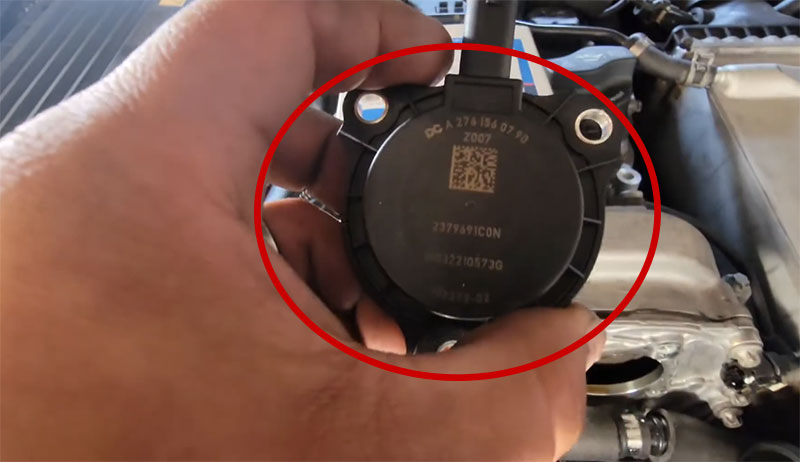
5.3. Timing Chain Replacement
Procedure: Timing chain replacement is a complex procedure that requires specialized tools and expertise. It typically involves the following steps:
Lock the engine’s crankshaft at the Top Dead Center (TDC) position.
Remove the engine’s timing cover(s) to access the timing chain, sprockets, guides, and tensioner.
Carefully remove the old timing chain, noting the orientation of the timing marks.
Inspect the timing chain guides and tensioner for wear or damage and replace them as necessary. It is generally recommended to replace the tensioner and guides whenever the timing chain is replaced.
Install the new timing chain, ensuring that the timing marks on the crankshaft and camshaft sprockets are correctly aligned according to the manufacturer’s specifications.
Reassemble the timing cover(s) and any other components that were removed.
Refill the engine oil if it was drained during the procedure.
After reassembly, it is crucial to retime the engine accurately to ensure proper valve timing.
Clear the P0024 code with Xentry software and perform a thorough test drive to verify the repair.
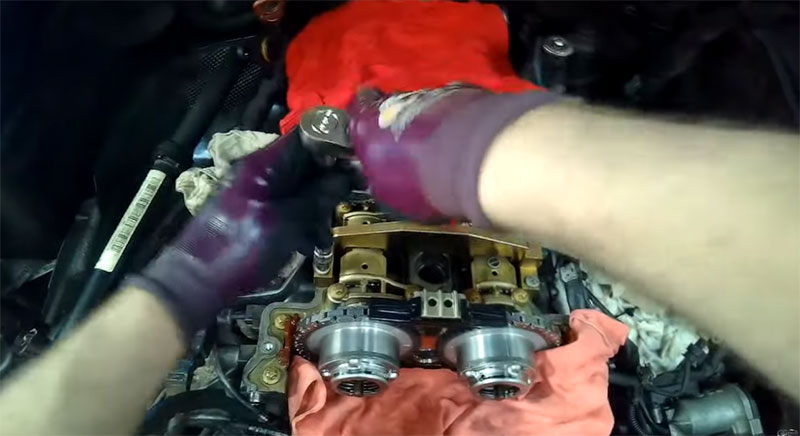
=> Contact AutoExplain via WhatsApp number +1(936)2896695 to get FREE timing chain remove & installation guidance (PDF format)
5.4. ECM Reprogramming (Software Update)
Tool Requirement: Performing ECM reprogramming requires specialized diagnostic equipment, such as Mercedes-Benz’s Xentry system or other professional-grade scan tools like the Autel MS908 that offer ECU programming capabilities.
Post-Update Steps: After successfully flashing the latest firmware to the ECM, it is essential to clear all stored fault codes and perform any necessary adaptation resets as guided by the diagnostic tool. This allows the ECM to properly learn and control the VVT system with the updated software.
Preventing the occurrence of codes like P0024 is always better than dealing with the repairs. Here are some key preventive measures to maintain the health of your Mercedes-Benz’s VVT system:
Regular Oil Changes with Certified Oils: Adhere strictly to Mercedes-Benz’s recommended oil change intervals (typically every 10,000 miles or one year, whichever comes first). Always use synthetic engine oils that meet Mercedes-Benz specifications, such as MB 229.5 or 229.52. Using the correct oil type and ensuring timely changes are fundamental to VVT system longevity.
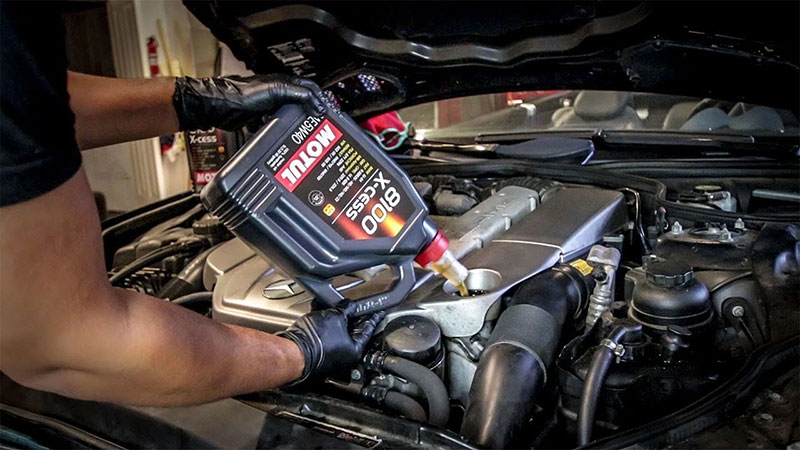
Routine Harness Inspections: During regular maintenance checks, visually inspect the wiring harnesses and electrical connectors associated with the VVT solenoids and camshaft position sensors. Look for any signs of fraying, damage, corrosion, or loose connections. Addressing these issues early can prevent electrical faults that could impact VVT system operation.
Enable Automatic ECM Updates: If your Mercedes-Benz is equipped with Mercedes Me Connect services, ensure that automatic ECM software updates are enabled. Keeping the ECM software up to date can help prevent software glitches that might lead to false fault codes or VVT system control issues.
While some drivers report temporary operation without symptoms, prolonged driving risks catastrophic engine damage due to improper valve timing. Immediate diagnosis is advised to prevent phaser or chain failure.
Resolving the P0024 code in Mercedes-Benz vehicles demands a blend of mechanical expertise and electrical diagnostics. By prioritizing oil quality, solenoid functionality, and timing integrity, owners can restore engine performance and avoid costly repairs. For complex issues like LIN bus failures or ECM glitches, professional tools and Mercedes-specific protocols are indispensable.
If you’re struggling with a Mercedes P0024 code, AutoExplain is here to help! We provide expert car diagnostics, coding, and programming support. Contact us via WhatsApp at +1(936)2896695 for professional assistance!


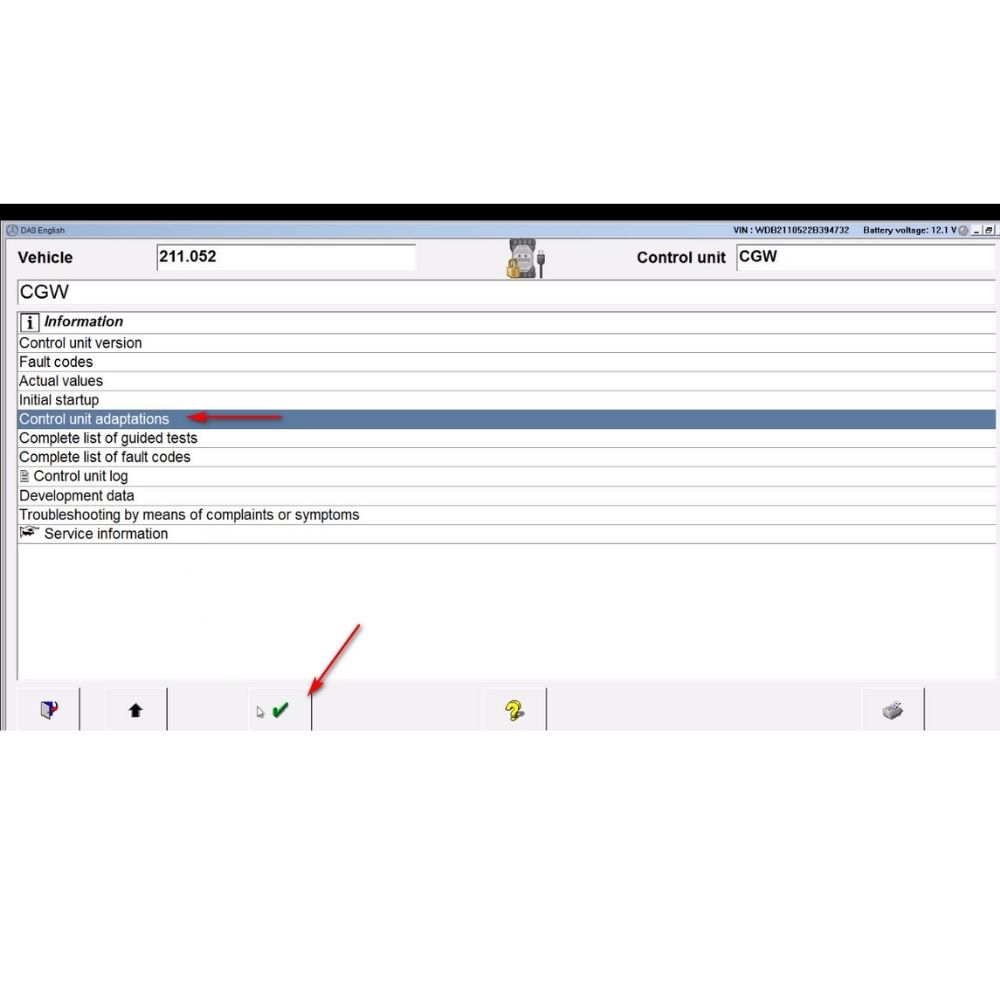
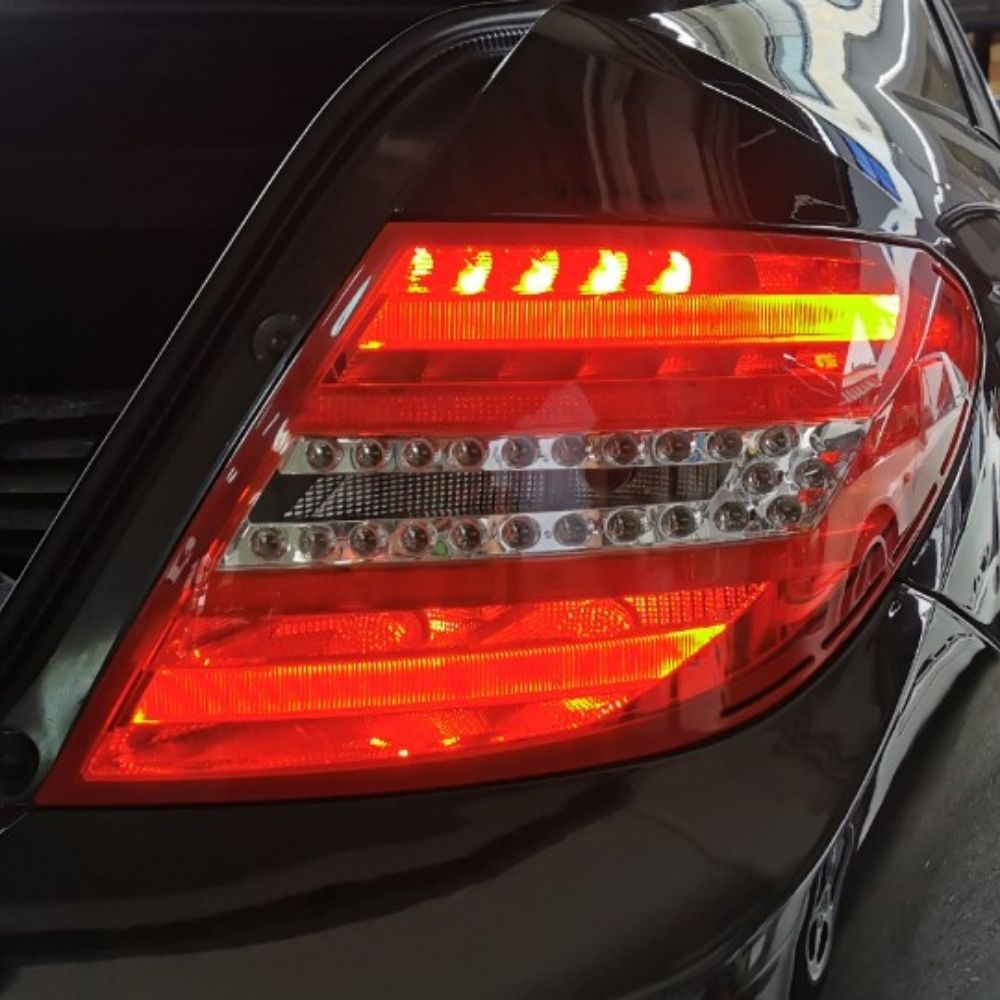



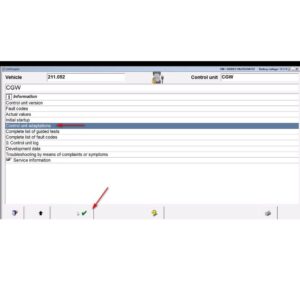
At AutoExplain, we provide automotive online repair service, auto repair tips, car repair manuals & document & training course to help mechanics of all experience levels—fix vehicles efficiently
AUTO EXPLAIN LLC
Employer Identification Number (EIN):
38-4349958
Whatsapp Us: +1(936)2896695
Gmail: [email protected]
Our Workshop: 1500 N Grant ST Sten Denver, Colorado, United States
Copyright 2025 © AutoExplain